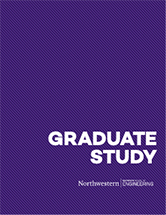Generating the Textbook of the Future
MSAI and MBAi students collaborated to reimagine how AI can help teachers and students in the classroom. Their solution was named the top project at the MBAi + MSAI Capstone Showcase.
Fergie Liang (MBAi '24) remembers the frustration of opening textbooks to learn about recent events, only to realize the books were published years before the event took place.
Outdated textbooks can limit learning, Liang said.
Sailaja Bobburi (MSAI '24) agreed.
"While I rely on textbooks for foundational knowledge, I frequently turn to internet resources to supplement and expand on that knowledge," Bobburi said. "However, this process can be overwhelming and time consuming due to the sheer volume of information online."
What if technology could be leveraged to curate and assemble high-quality, real-time content that is appropriately leveled and relevant to classroom learning? That was the question ViewSonic, a global provider of visual and EdTech solutions, posed to students for the capstone project in Northwestern Engineering's Master of Science in Artificial Intelligence (MSAI) program and Northwestern's MBAi program — a joint-degree program offered between Northwestern's Kellogg School of Management and the McCormick School of Engineering.
A team of five students — three from MSAI and two from MBAi — collaborated to create a content generation tool powered by artificial intelligence (AI) that allows teachers to dynamically create and customize textbook chapters based on their specific classroom needs. The group's work was named the top project at December's MBAi + MSAI Capstone Showcase.
"As a team we put in a lot of effort to understand the challenge that ViewSonic gave us, go out and find out what teachers really wanted, and finally build the technology and iterate on it,” Shreya Singh (MSAI '24) said. "Being recognized at the showcase was great because it was a testament to our efforts."
A big part of the success was the students' ability to transform a high-level problem into a specific and accessible proposal they could review and develop with teachers.
"The fact they finished with a working proof of concept that incorporated multiple rounds of input from teachers as well as ViewSonic representatives supporting the technical development process, speaks volumes about their ability to listen to the needs of their stakeholders," MBAi director Andy Fano said. "Taking vague requirements and articulating a clear problem with a realistic plan is at the core of the capstone project, and it's a skill that's valuable for both MBAi and MSAI students."
Like Liang and Bobburi, many students struggle with trying to learn from outdated textbooks. Teachers are also challenged by static textbooks, the team discovered. Through background research and interviews with teachers from public and private schools across the country, the students realized a large percentage of teachers are already relying on the internet and large language models (LLM) to generate content.
In response to these needs, the team created a solution that empowers teachers to adapt materials on demand. This allows teaching resources to be current, flexible, and relevant despite evolving curriculum needs and classroom dynamics.
There are five key elements of the digital tool that the students believe make it both impactful and unique:
- Teachers can adjust the state, subject, or topics and subtopics to ensure alignment with local educational standards.
- The tool offers flexibility in lesson planning by allowing teachers to organize topics in any order they prefer.
- Visual aids are incorporated to enhance learning experiences and make concepts more engaging and easier to understand.
- In-class activities and review questions are included to reinforce lessons and help teachers with student assessment.
- A source validation feature allows teachers to view and verify the original source of the content.
- "This project isn't just about creating another digital tool," Liang said. "It's about defining the textbook of the future and reimagining how learning happens."
The capstone project is intentionally designed so that MSAI and MBAi students can bring their distinct backgrounds and experiences together to solve a real problem. The goal is to replicate the realities of working with AI in a professional workspace while allowing students to learn from one another.
Bobburi said those goals were accomplished.
"Our MBAi teammates demonstrated how to facilitate conversations that uncovered user pain points and expectations, enabling us to shape our AI-powered tool around those insights," she said. "Their skill in bridging the gap between technical implementation and business requirements proved instrumental in refining our project vision."
That was echoed by Shashank Sabhlok (MBAi '24).
"From (the MSAI students), I developed the ability to think on my feet when solving problems," Sabhlok said. "Many times, we had to pivot due to challenges posed by specific technologies, but our team handled these shifts with grace and within tight timelines. Together, this partnership enabled us to deliver a solution designed to provide long-term value, reflecting the synergy required to succeed in real-world product leadership roles."

